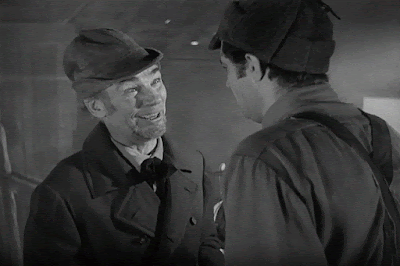Lucille Ball é um patrimônio cultural da humanidade. Quando as pessoas mexem com Lucy, a mulher que todos nós amamos, a coisa fica feia. Quando “Apresentando os Ricardos” foi anunciado, e especialmente quando foi anunciado o elenco principal, houve frenesi nas redes sociais. As pessoas diziam que Nicole Kidman e Javier Bardem não se pareciam em nada com Lucy e Desi! Mais pessoas disseram que não vão ver o filme! Eu, como a boa crítica de cinema que considero ser, decidi não julgar o filme sem vê-lo. E, após vê-lo, eis meu veredicto:
Lucille Ball is a national treasure. When people mess up with Lucy, the woman we all love, things get ugly. When “Being the Ricardos” was announced, and especially when the main cast was announced, there was uproar on social media. People said Nicole Kidman and Javier Bardem looked nothing like Lucy and Desi! More people said they won’t watch the movie! I, like the good film critic I think I am, decided not to judge it without seeing it. And, after seeing it, here’s my verdict:
Há momentos em que parece que tudo acontece ao mesmo tempo. Esse é o caso de uma semana de tirar o fôlego durante as gravações de um episódio da segunda temporada de “I Love Lucy”. Walter Winchell diz em seu programa de rádio que Lucy foi chamada para depor frente ao comitê da HUAC – Lucy era comunista! Uma revista publica uma matéria sobre Desi estar traindo Lucy. E Lucy e Desi revelam que Lucy está grávida, e exigem que a gravidez seja adicionada ao programa de TV. Ufa! De segunda a sexta-feira, do dia que o elenco recebe um novo roteiro até o dia em que gravam o programa, vemos Lucy (Kidman), Desi (Bardem), Vivian Vance (Nina Arianda), William Frawley (J.K. Simmons) e a equipe reagirem a este trubilhão.
There are times when it looks like everything is happening at once. It is the case of a breathtaking week during the shooting of an episode in the second season of “I Love Lucy”. Walter Winchell says in his radio show that Lucy had been called to testify under the committee of the House of Un-American Activities – Lucy was a communist! A magazine publishes a story about Desi cheating on Lucy. And Lucy and Desi disclose that Lucy is pregnant, and demand the pregnancy to be added to the TV show. Whew! From Monday to Friday, from the day the cast received a new script to the day they shot the show, we see Lucy (Kidman), Desi (Bardem), Vivian Vance (Nina Arianda), William Frawley (J.K. Simmons) and the crew react to all this turmoil.
Há alguns flashbacks introduzidos por atores interpretando pessoas que conheceram e trabalharam com Lucy e Desi. Estes flashbacks mostram como o casal se conheceu e os desafios que eles enfrentaram, tanto nas carreiras quanto na vida pessoal, até o início de “I Love Lucy”. São partes interessantes que ajudam as pessoas que não conhecem Lucy e Desi a entenderem melhor a trajetória deles.
There are some flashbacks introduced by actors playing people who knew and worked with Lucy and Desi. These flashbacks show how the couple met and the challenges they faced, both in their careers and lives up until the beginning of “I Love Lucy”. These are interesting bits that help people who are unfamiliar with Lucy and Desi to understand their trajectory.
Lucille Ball é retratada como uma artista muito meticulosa, preocupada com tudo, cada gesto e cada palavra do roteiro. Ela está lá para fazer as pessoas rirem, e quer muito que a sitcom deles seja a melhor possível. Mais do que isso: ela conhece as regras do seu jogo – a comédia slapstick – e entende o público. Uma perfeccionista que se importava com a plateia: essa era a Lucy que amamos.
Lucille Ball is portrayed as a very meticulous artist, worried about everything, every gesture and every word in the script. She is there to make people laugh, and she really wants their sitcom to be as good as possible. More than that: she knows the rules of her game – slapstick comedy – and understands the public. A perfectionist who cared about her audience: this was the Lucy we love.
Há alguns momentos interessantes com Lucy interagindo com Vivian Vance e William Frawley. Ela discute com Vivian sobre a nova dieta de Vivian, dizendo que, ao perder peso, Vivian faria mal à personagem que ela interpreta, Ethel, que é uma dona de casa comum. Com o irascível William, Lucy conversa sobre masculinidade, sobre Desi não ficar em casa e sobre como Desi se sente um coadjuvante na vida assim como parece sê-lo no programa.
There are some interesting moments of Lucy interacting with Vivian Vance and William Frawley. She argues with Vivian about Vivian’s new diet, claiming that Vivan losing weight would be bad for the character she plays, Ethel, who is an average housewife. With the irascible William, Lucy talks about masculinity, about Desi not being at home and about Desi feeling like he’s a supporting character in life as he seems to be in the show.
Muitas pessoas mencionaram que Debra Messing, e não Nicole Kidman, deveria ter sido escalada para viver Lucy. Recentemente, Debra refez alguns esquetes clássicos de Lucy em um episódio do revival de “Will & Grace” e se saiu muito bem, mesmo eu achando que os maquiadores deixaram as bochechas dela salientes demais. Nicole Kidman, uma boa atriz, também se sai bem ao interpretar Lucy em “Apresentando os Ricardos”, por isso podemos apenas imaginar como se sairia Debra no papel, que exige mais talento dramático que cômico.
Many people mentioned that Debra Messing, not Nicole Kidman, should have been cast as Lucy. Recently, Debra re-enacted some classic Lucy routines in an episode of the revival of “Will & Grace” and did quite well, even though I think her makeup team made her cheekbones too prominent. Nicole Kidman, a good actress, also does well in playing Lucy in “Being the Ricardos”, so we can only wonder how Debra Messing would do in the role, one that demands more dramatic than comic talent.
Desi
Arnaz é descrito como o homem mais bonito e charmoso que você
poderia conhecer. Javier Bardem é bonito e charmoso à sua maneira,
mas infelizmente não se parece nada com Desi. A sensação é de que
o departamento de maquiagem se esforçou tanto para fazer Nicole
Kidman se parecer com Lucille Ball – e foram bem-sucedidos – que
não sobrou tempo para trabalhar com Bardem. Outra opção para o papel de Desi era o ator brasileiro Wagner Moura e eu acredito que ele seria uma escolha melhor.
Desi Arnaz is described as the most handsome and charming man you could ever meet. Javier Bardem is handsome and charming on his own way, but unfortunately nothing like Desi. It looks like the makeup department put so much effort in making Nicole Kidman look like Lucille Ball – and in this they succeeded – that they gave up on Bardem.One of the other options for Desi was Brazilian actor Wagner Moura and I think he'd have been a better choice.
“Apresentando os Ricardos” foi escrito e dirigido por Aaron Sorkin e, assim como outros filmes recentes dele, é um filme longo, por vezes inchado. É uma boa introdução para as pessoas que não ouviram falar de Lucy, Desi e “I Love Lucy” ou que conhecem muito pouco do drama nos bastidores desta comédia clássica. Os fãs de Lucille Ball podem ficar despreocupados: é um retrato lisonjeiro da amada ruiva*, talvez não um tributo à altura dela, mas de toda forma lisonjeiro.
* mas não tão lisonjeiro para Judy Holliday
“Being the Ricardos” was written and directed by Aaron Sorkin and, like some of his recent movies, is a long, sometimes bloated movie. It’s a good introduction for people who haven’t heard about Lucy, Desi and “I Love Lucy” or know very little about the backstage drama of this comedy classic. Lucille Ball’s fans may rest assured: it is a flattering portrait of the beloved redhead*, maybe not a tribute as big as she was, but a flattering one nevertheless.
* but not so flattering for Judy Holliday







































